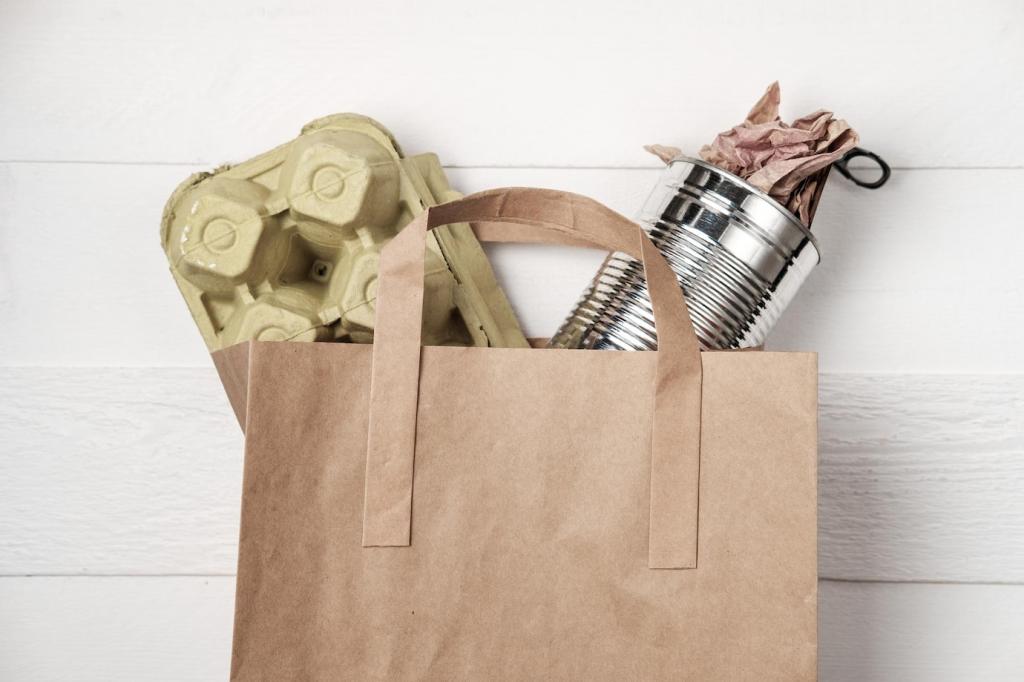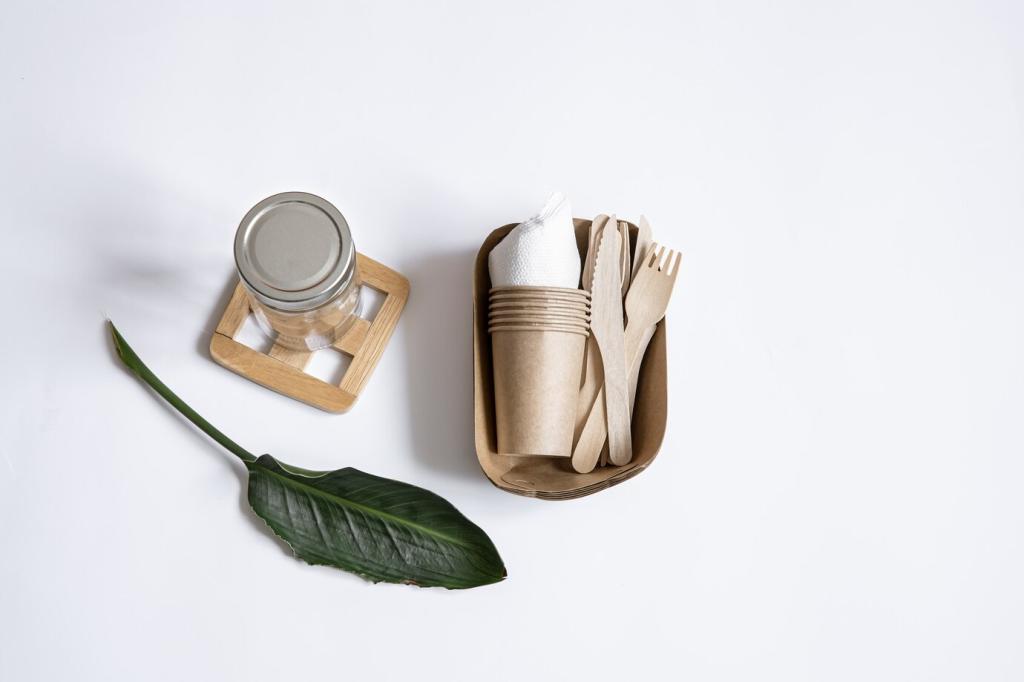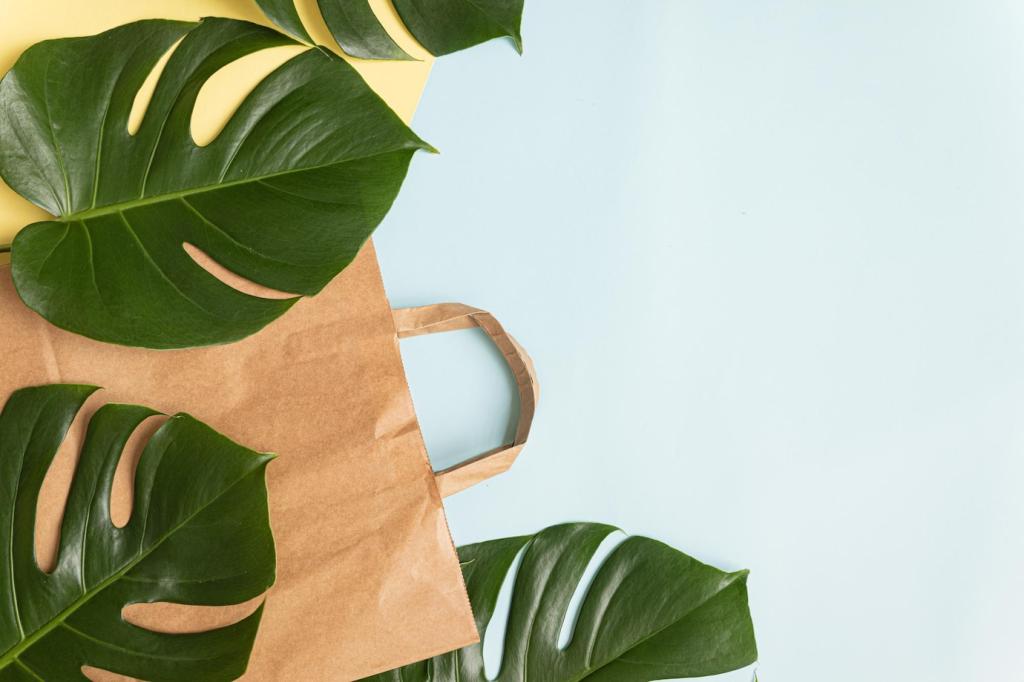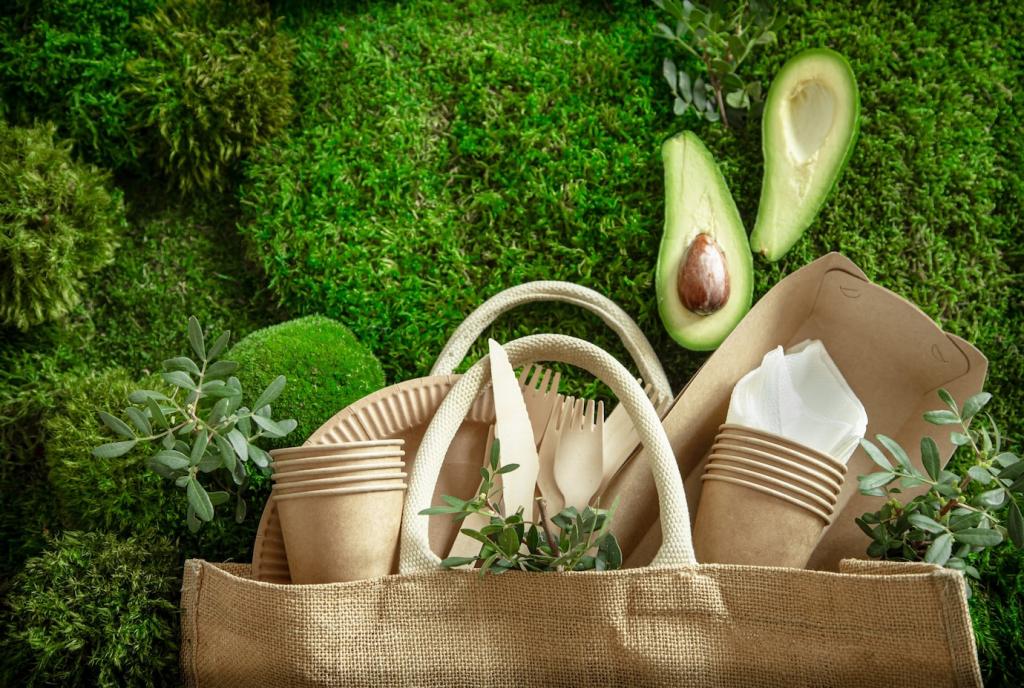Eco-Friendly Packaging Options for Households: Small Swaps, Lasting Change

What Makes Packaging Eco-Friendly at Home
Prioritize glass, aluminum, and steel because they recycle efficiently and hold value in the system. Favor paper and cardboard with recycled content and credible certifications. When possible, choose packaging designed for reuse first, then easy recycling, and avoid mixed materials that complicate sorting.
What Makes Packaging Eco-Friendly at Home
Eco-friendly means considering the full journey, from production impacts to how you reuse, refill, and finally dispose. A sturdy jar reused one hundred times beats a flimsy single-use alternative. Tell us how you extend the life of containers at home, and inspire others with your habits.
Reduce Before You Recycle: Smarter Daily Habits
Switch detergents and soaps to refills, concentrates, or tablet formats to eliminate disposable bottles. We swapped to a local refill station and cut plastic by half in a month. Share your nearest refill finds or ask the community for recommendations in your neighborhood.

Glass jars and bottles
Sturdy, inert, and endlessly reusable, glass is perfect for sauces, grains, and even freezer soups with headspace left. We label with a wax pencil for easy washing. What quirky glass jar do you reuse the most, and what miracle did it save from going to waste?
Tins, steel, and aluminum
Metal containers are durable, light-blocking, and highly recyclable. Repurpose cookie tins for snacks or craft supplies, and use aluminum tins for on-the-go lunches. Share a metal container hack that surprised you, and help a reader rethink what is already in their cupboard.
Fabric wraps and bags
Beeswax or plant-wax wraps keep half onions, bread, and cheese fresh without cling film. Cotton produce bags weigh little and wash well. Ask kids to decorate cloth sacks with stamps for weekly markets, and tell us how you make reusables fun at home.
Compostables and Bioplastics: Use Wisely
Many bioplastics, like PLA, need high heat only found in industrial facilities. Paper with plant-based coatings may still be compostable locally. Check what your city accepts, and share your municipality’s rules so fellow readers can compare and avoid wishful tossing.
Recycling Reality Check: Make Every Package Count
Know your local rules
Municipal guidelines differ on items like caps, cartons, or pizza boxes. Print or save the official list and tape it inside a cabinet door. Tell us your city, and we will crowdsource a quick-reference guide in the comments for other neighbors.
Contamination hurts good recycling
Rinse and dry containers to keep paper clean, and keep flexible films out of curbside bins unless specifically allowed. Even small food residue can spoil entire loads. Share your best rinsing shortcut and help someone else save time without wasting water.
Set up a sorting station
Create clear bins for paper, metals, glass, and specialty drop-offs, plus a spot for reusables. Add kid-friendly labels and a cheat sheet of local exceptions. Post your setup or ask for feedback, and subscribe to see monthly reader makeovers for inspiration.


Food Freshness Without Plastic Waste
Wrap leafy greens in a slightly damp towel, store herbs upright in water, and keep mushrooms in paper. Our lettuce lasted an extra week after switching. Tell us your crisper-drawer trick and we will compile a community-tested produce guide.
Food Freshness Without Plastic Waste
Use glass jars with headspace, stainless containers, or silicone bags to prevent freezer burn. Label with a wax pencil and rotate oldest forward. Share your favorite batch-cook item and help others build a freezer library that saves time and packaging.
